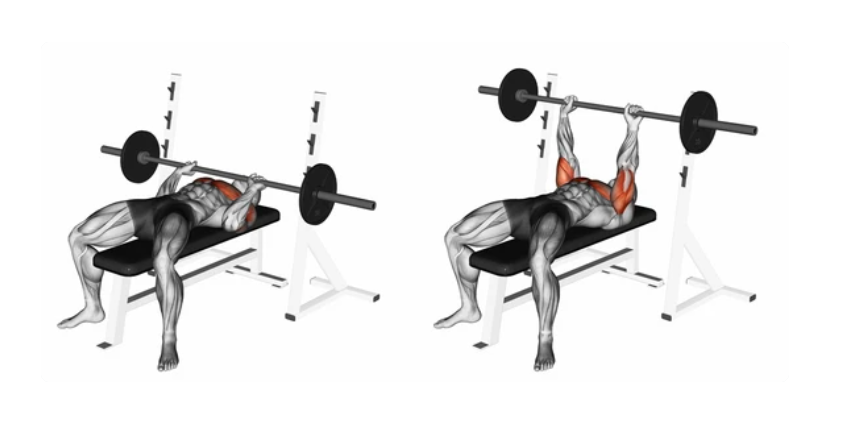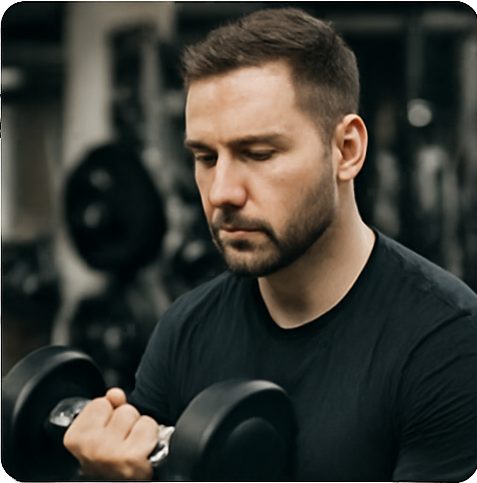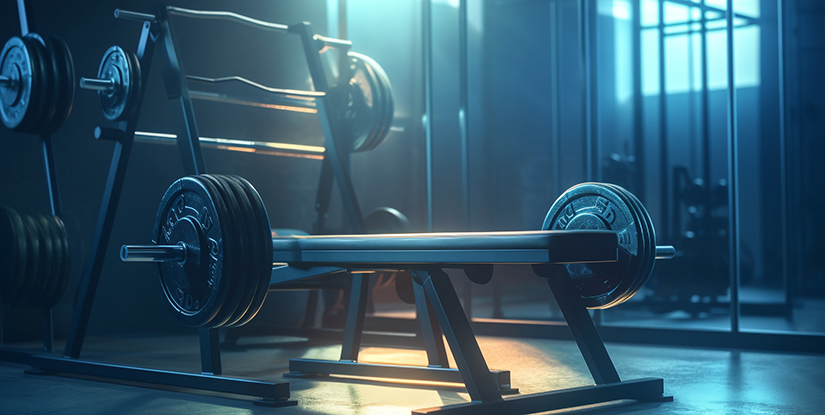I first gave the 3CT bench press a shot when my regular bench stalled hard. I was banging out touch-and-go reps like nothing, but honestly, my chest and triceps weren’t growing the way they should. Yeah, the weight looked good on paper—but the bounce was doing all the work. Eventually, I hit a wall and figured it was time to slow things down and actually build some real strength.
What I Learned from the 3CT Bench Press
What is the 3CT Bench Press?
The 3CT bench press—or 3-count pause bench—is your standard bench, but with a twist: you pause at the bottom for a full “1…2…3” before pressing it back up. No bounce, no shortcuts—just pure control.

How I Perform It in the Gym
- I set up tight, lying on the bench, unrack like I mean it, then lower slow and steady.
- I literally count “one… two… three” in my head before exploding up.
- Elbows stay tucked, chest stays proud, and I keep my glutes locked in.
- It’s a grind—but that tension? Insane.
The Benefits I Noticed
- No more bouncing reps just to move weight
- Way more chest feel—like deep activation
- Fixed my biggest weak point: getting stuck off the chest
- Bonus: it cleaned up my bar path too
What You’ve Gotta Watch For
- You’ll 100% have to lighten the load—at least at first
- Your ego might take a hit (mine did)
- It only works if you stay tight and actually pause—no fake counts
Why I Stuck with It Even When It Sucked
Switching from touch-and-go to the 3CT bench press felt like a major setback at first. Not gonna lie—it sucked.
But I stayed with it. And here’s what actually happened:
Yeah, My Numbers Dropped at First
- I had to drop the weight by 10–15% right off the bat.
- Holding the pause felt brutal—especially on heavier sets.
- My ego definitely took a hit.
But the Reps Got Way Stronger
- Felt more tension in my chest and triceps from rep one.
- My bar path cleaned up fast. No more weird bounces.
- Each rep felt intentional, not rushed.
The Payoff Came Around Week 6
- My 3CT pause bench actually matched my old bounce PR.
- Lockout got smoother, and I started moving heavy weight again.
- My control and confidence under the bar shot way up.
Now I Rotate It In Regularly
- I use it every few weeks—especially when I hit a plateau.
- Great for building strength off the chest and fixing sloppy reps.
- Perfect for volume control and bar speed on heavy days.
Here’s the deal—if your bench is stuck and you’re lifting in a commercial gym, the 3CT bench press changes the game. That 3-second pause? Brutal—but it forces control and builds serious pressing strength. It’s tough, but if you want results, it’s 100% worth throwing into your program.
Related articles:
Can Anyone Hit a 160kg Bench Press?
Why I Use a Machine for Bench Press When Training Alone
FAQs about 3CT Bench Press
A 3CT bench press is a variation of the standard bench press where the lifter pauses at the bottom of the movement for three seconds before pressing the barbell back up. The “3CT” refers to the three-second pause at the chest, eliminating any momentum and forcing the muscles to work harder from a dead stop. This technique increases time under tension, which can help build strength and improve muscle endurance, particularly in the bottom portion of the lift. The 3CT bench press is beneficial for improving control, lockout strength, and overall muscle engagement. It is commonly used by both powerlifters and bodybuilders to target the chest, shoulders, and triceps.
This method also helps lifters break through plateaus, as the pause forces them to generate force from a completely static position. Over time, this can improve their overall pressing strength and performance. To perform the 3CT bench press correctly, ensure the pause lasts a full three seconds and focus on maintaining proper form throughout the entire movement.
The 3×3 bench press is a strength-focused workout routine that involves performing three sets of three reps with heavy weight. This low-rep, high-intensity approach is ideal for powerlifters or individuals focused on building raw strength. The main benefit of the 3×3 bench press is that it allows you to lift heavier weights, helping to increase your maximum strength. It is also excellent for improving muscle recruitment and maximizing overall muscle power during the press.
One advantage of the 3×3 bench press is that it allows the lifter to focus on improving their strength without being overly fatigued by higher-rep training. By focusing on three reps per set, the body has more time to recover between sets, allowing for greater power output. However, the 3×3 bench press may not be ideal for individuals looking to build muscle mass or hypertrophy, as it prioritizes strength over volume. For muscle growth, lifters may need to combine the 3×3 with accessory exercises and higher-rep ranges.
While there’s no official record, it’s widely reported that Sylvester Stallone could bench press around 385–400 pounds at his peak in the 1980s. He trained intensely during the Rocky and Rambo eras, often working with professional bodybuilders like Franco Columbu. Stallone himself has said he was lifting extremely heavy for film prep—even sustaining injuries from pushing his limits. Though we can’t confirm the exact number, it’s clear he was putting up some serious weight for a Hollywood actor.
A 3RM bench press stands for your 3-rep max—the maximum amount of weight you can bench press for three solid reps with good form. It’s often used in strength training programs to gauge upper-body power and track progress without maxing out for a risky 1-rep lift. A 3RM is heavy enough to test strength but safe enough to repeat and build from. Coaches use it to program intensity and volume based on percentages of your 3RM.

Hi, I’m the editor here at Leadman Fitness. We’re a manufacturer focused on producing top-quality barbells, plates, kettlebells, dumbbells, and strength training gear. I’ve been into sports and fitness for years, and I know my way around all kinds of gym equipment—both from using it and helping create it.
I spend a lot of time understanding the real problems people run into in the gym—whether it’s beginners trying to pick the right gear or experienced lifters looking for something more durable. I stay in close touch with our production team and talk directly with other equipment makers, so we’re always improving based on what real lifters and coaches are looking for.
What I share comes from hands-on experience—stuff that actually helps people train better, not just in theory, but in real gyms.
